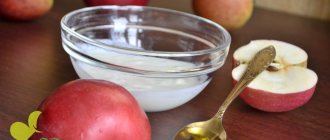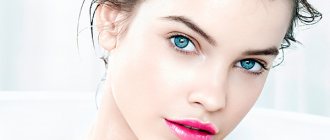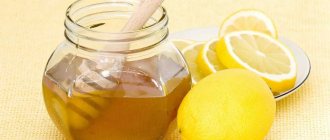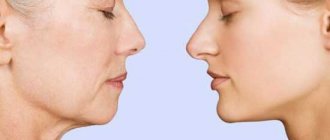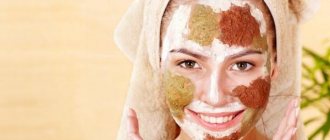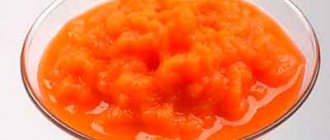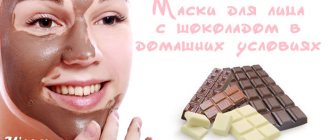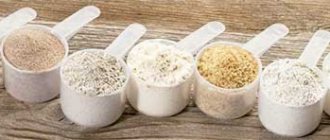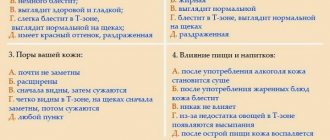Problematic skin is not only an external defect, but also a cause of psychological discomfort. Neither teenagers nor young women want to be seen with pimples on their skin. But the reason for their appearance is not always easy to eliminate. If these are hormonal changes during adolescence, then you should just be patient and try available folk remedies to solve the problem. One of them is yeast. Masks based on them help treat inflammation of the skin. So, let’s learn in detail about such cosmetic procedures.
The undeniable benefits of yeast face masks
The vitamins, amino acids, minerals and other beneficial elements contained in yeast have a comprehensive rejuvenating, cleansing, antibacterial effect, penetrating deep inside to nourish skin cells, moisturize, improve blood circulation, and tighten the oval of the face.
They are suitable for almost everyone and are an excellent alternative to visiting a beauty salon and expensive procedures.
Contraindications
Despite all the benefits of proteins and vitamin B, positive reviews and quick results, yeast face masks still have their contraindications :
- Do not apply to damaged skin (burnt or after laser resurfacing);
- It is not recommended to use for fungal or infectious diseases of the dermis (lichen, herpes, etc.);
- if the mass burns the skin, and after it rashes and redness appear - this is a sure sign of an allergy, immediately stop using it, rinse the affected area with warm milk or chamomile decoction.
The benefits that a yeast face mask brings to the skin are undeniable. What effect you get depends only on how often this product is used. Any of the above masks will be suitable for both hair and body, just increase the proportions a little. Folk cosmetics help solve many problems without the use of expensive products and scalpels, the main thing is to use it correctly.
Recommended articles on the topic:
- Homemade mask against oily skin
- How to take brewer's yeast in acne tablets?
- Hair mask made from burdock and olive oil
- Amazing facelift effect at home in a couple of days
Simple and uncomplicated rules
Before using yeast masks at home, you must:
- Determine your skin type as accurately as possible;
- choose a mask depending on the desired result;
- familiarize yourself with the cooking rules;
- Read the contraindications carefully.
Recommendations for use
Masks with yeast are recommended not only as a rejuvenating effect, but also can solve many problems, depending on the type of skin:
- with oily skin, the amount of sebum produced decreases, pores become narrower, the number of blackheads decreases, and the skin becomes matte;
- for dry skin, in combination with other additional components - nourishing and moisturizing the skin;
- for pale, dull skin, the tone and texture of the skin is evened out, the complexion improves;
- for problem skin, inflammation decreases, acne spots decrease;
- With aging skin, epidermal cells are restored, wrinkles are reduced and smoothed, and elasticity increases.
Rules for preparing yeast masks
It is best to choose regular live pressed or brewer's yeast. Using dry yeast is not advisable as it may not be effective.
Regular yeast in the required quantity should first be crumbled, then add warm water or milk, depending on the recipe, and stir until a paste forms; do not pour boiling water over it so that it does not lose its beneficial properties .
It is better to use mineral water without gas or purified water for breeding yeast. The dissolved yeast should be left to ferment for an hour. It is necessary to mix thoroughly both during cooking and during infusion so that lumps do not form. Liquid brewer's yeast can be immediately added to masks; they do not require additional preparation.
To achieve the best result, you need to follow a number of rules:
- Only fresh ingredients must be used.
- The mask should be applied immediately after preparing it. It is not recommended to store it in the refrigerator and use it the next day, as it will not give the desired effect.
- Before application, it is advisable to clean and steam your face so that the active components act as deeply as possible on the skin, and it is good to massage.
- The exposure time should not exceed twenty minutes.
- If you experience any unpleasant sensations, such as itching or burning, the mask should be washed off immediately with warm water.
- To rinse, it is advisable to use warm and cool water alternately.
- After the procedure, be sure to use a moisturizer.
- It is recommended to use the procedures in a course for a month, no more than twice a week.
- Do not use decorative cosmetics for two hours after applying the mask.
- Alternating between different caring masks to avoid addiction.
Composition and properties of yeast
This seemingly simple product is highly valued as a cosmetic product. Yeast is a rich source of microelements and vitamins important for supporting the functioning of skin cells. They contain:
- B vitamins. They refresh and tone the skin, activate blood circulation, and normalize metabolic processes.
- Amino acids and antioxidants that activate collagen synthesis.
- Vitamins E and PP. These are sources of nutrition for the skin.
- Minerals make the skin resistant to external influences.
Yeast-based masks will be useful for oily skin prone to rashes. They quickly eliminate unhealthy oily shine, making the skin matte and soft. The procedures, when used regularly, cope well with inflammation and acne, and reduce enlarged pores. The rich composition of yeast ensures that masks based on it perfectly nourish the skin, making it healthier and brighter.
Contraindications for use
Yeast facial compositions are prepared on the basis of natural products. Most of them do not cause side effects. Yeast as the basis of masks is a non-allergenic product. Therefore, cases of individual intolerance to such masks are extremely rare.
Yeast masks for the face against wrinkles - recipes
Recipes for yeast masks are simple in composition, but very effective.
At the first stage, you need to dilute the yeast with water, milk or kefir, depending on the recipe, and leave the mixture to ferment for about an hour. At the second stage, additional components are added, depending on the desired result. The optimal exposure time for the mask is 15 minutes.
Rejuvenating face mask
To achieve a rejuvenating effect, you need to dilute yeast (1 tbsp) in warm milk (1 tbsp), stir, and leave for an hour. Then add one egg white and one spoon of honey to the yeast base, mix the mixture and apply to the face for 15-20 minutes.
Anti-deep wrinkle mask
To eliminate deep wrinkles, honey (3 tbsp) and olive oil (1 tbsp) are added as additional components. First you need to prepare the yeast base, for this you need to soak the yeast (1 tbsp) in the same amount of warm milk, then add additional ingredients and mix. Apply to the face as follows: first one layer, then, when slightly dry, apply a second layer, wait 15 minutes and rinse with water.
Anti-wrinkle mask under the eyes
To eliminate wrinkles around the eyes you only need two ingredients: milk and yeast. Pour milk (1 tsp) over one spoonful of pressed yeast and let it ferment. Stir and then apply the mixture to the area around the eyes.
Mask for aging skin
A very simple but quite effective mask with the addition of cucumber. Add the juice squeezed from one cucumber to the prepared yeast mixture, mix, then apply to the face.
If you want not only to get rid of wrinkles, but also to acquire a beautiful complexion and tighten the shape of your face, you need to add sour cream (2 spoons), pumpkin (40 grams) and oatmeal (2 spoons) as additional ingredients. To do this, you first need to pre-boil and beat the pumpkin in a blender. Yeast must be diluted in sour cream and left to ferment, then add additional ingredients and mix.
Mask for oily skin types
You will need sour cream as an additional component. To do this, add a tablespoon of sour cream to the yeast base, mix and apply to the face. After the exposure time has expired, the mask must first be slightly soaked with warm water and then rinsed off. In summer, the pulp of one ripe tomato can be added as an additional ingredient. Lycopene, which is part of tomato, is a good protector of the skin from the harmful effects of the sun.
Mask for dry and sensitive skin
For dry skin types, in addition to the rejuvenating effect, hydration is very important, so you need to add honey or aloe as additional ingredients. It is best to dilute yeast with cream. maybe kefir.
- option: pressed yeast, one egg yolk, a tablespoon of honey.
- option: one tablespoon of liquid brewer's yeast, 1 teaspoon of aloe juice.
With the help of yeast masks you can stop time and prevent premature aging. With commonly available ingredients found in every home, you can look young and attractive without resorting to plastic surgery.
Increasing the effectiveness of masks
In order for yeast formulations to bring maximum benefits to the skin, it is recommended to also use cosmetic yeast during their use. They are sold in pharmacies and are inexpensive. Consumption of tableted yeast will enhance the effect of local acne treatment.
In addition, it is worth adjusting your diet and eliminating from it those foods that provoke inflammation on the skin. These are sweets, fried, spicy, pickled, smoked dishes. Instead, the diet should include vegetables, cereals, lean fish, berries, and fruits. To normalize metabolism and cleanse the skin, you need to drink more clean water.
Tomato mask with yeast
This yeast face mask for acne is quite effective. It is immediately cleansing and tonic and prevents inflammatory processes.
The fresh tomato is steamed, after which one teaspoon of lemon is added to it. To these ingredients you need to add one tablespoon of crushed and dried mint leaves, 2 tablespoons of oatmeal porridge and a tablespoon of fresh yeast. All components of the mask are mixed together. The mask is used for ten minutes, after which it is washed off with water. This composition is not only therapeutic, but also preventive.
Mask with honey and other organic ingredients
It is honey, green clay and kefir that can unlock the full potential of yeast.
To prepare the mixture you need 25 grams. Mix live yeast with a small amount of water and put it in a warm place so that the yeast is activated. When they are active, add one teaspoon each of green clay, honey and kefir. All components are mixed together. The mask should act on the skin for about fifteen minutes. After this time, the mask is washed off with warm water without soapy substances.
Lemon mask with yeast
Twenty grams of yeast are mixed with water and brought to the state of thick sour cream. Afterwards, half a teaspoon of lemon pulp is added to the resulting composition. The mask is applied to the skin for about twenty minutes, after which it is washed off with water without the use of soap substances.
After procedures involving applying masks, it is advisable to nourish the skin with cream.
As is already known, yeast is effective not only in the fight against acne, but also helps maintain optimal skin balance and fight age-related changes. Yeast, when combined with certain elements, can help dry skin.
For such a mixture, a spoonful of brewer's yeast, which can be purchased at pharmacies, is diluted with 10 mg of water. Add the yolk and two tablespoons of wheat germ juice to the resulting composition. The mask does not require modification or addition. It should remain on the skin for fifteen minutes. This procedure should be carried out at least three times a week.
If your skin is oily, then you need to use a milk yeast mask. This procedure, penetrating into the pores, regulates the production of sebum, kills pathogenic microbes, dries and removes redness and unevenness.
If the skin begins to peel, then add 1 tbsp to the paste of water and fresh yeast. spoon of cream. Cream softens the skin, nourishes it, fills it with vital moisture and beneficial bacteria that can restore the skin's lost balance. The mask stays on the face for 10 minutes. Three times a week will be enough for it to have a healing effect on the skin.
Indications and contraindications for use
Before making a yeast remedy, it is necessary to take into account all the tips for use related to the individual characteristics of each person’s body.
Acne most often occurs due to clogged pores. That is why those with oily skin suffer the most from this problem. In this case, yeast mixtures become an excellent solution due to the elements included in their composition. After several procedures, the skin surface loses its oily sheen and the pores become narrower.
An anti-acne mask with the addition of natural yeast is useful for dull and dry facial skin. In addition to the fact that defects such as acne will disappear, the skin is filled with collagen and acquires elasticity and freshness.
Cucumber mask with yeast
To whiten the skin, use a mask containing cucumber juice and yeast. For two spoons of yeast you need a spoon of cucumber juice. The time for applying the procedure on the face is 10 minutes. It should be used one to three times a week.
An alternative to this mixture is a mask with hydrogen peroxide and yeast. Hydrogen peroxide perfectly nourishes, cleanses the skin and produces a powerful bactericidal effect. This procedure fights pigment spots on the skin, removes acne marks, evens out complexion, and stimulates skin cells.
In order for the mask to produce the maximum effect, it is advisable, during its use, to exclude from the diet foods that can cause rashes on the skin and worsen its condition. Such products include alcohol, chocolate, confectionery, smoked foods, salty foods, spicy foods, carbonated drinks and products containing preservatives, flavor enhancers, sweeteners and other harmful chemical compounds. It is important to get enough sleep, lead an active lifestyle, drink enough water, follow a daily routine and avoid stressful situations. This is when the mask will give an excellent effect.
You might be interested in reading reviews about the Magnetic Mask, a magnetic mask for acne and acne.

